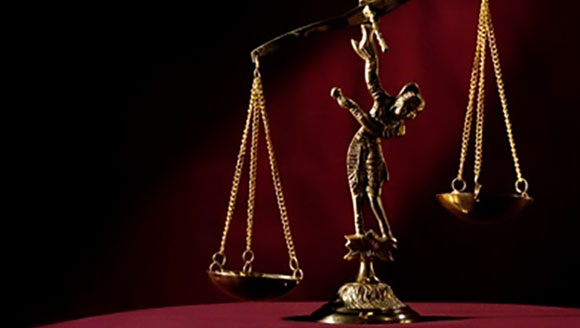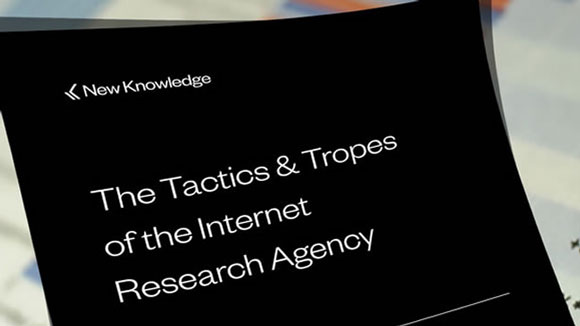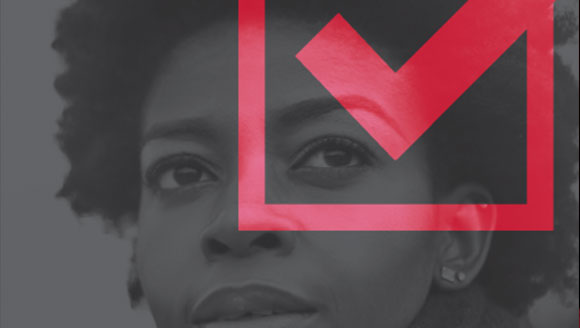Black and Digitally Invisible: The New Divide
 Dr. Nicol Turner-Lee
Dr. Nicol Turner-Lee
Center for Technology Innovation Fellow, Brookings Institution
Twitter: @drturnerlee
More than 90% of the U.S. population is connected to the internet and regularly engages its transformative and transactional capacities. Despite this positive trajectory in digital access, recent data from the Pew Research Center shares that 11% of Americans are still not online[1] These non-internet users are disproportionately people of color, low-income, less literate, seniors, and geographically isolated within rural areas. The reasons for their marginal internet use are largely due to a lack of interest, the cost of broadband services, and the inability to secure an affordable device, such as a smartphone, tablet, or computer.[2]
Unfortunately, not being online has consequences for the digitally disconnected.
In 2016, the digital economy accounted for 6.5% of current dollar GDP, and 6.2% of current-dollar gross output.[3] A 2016 report by Accenture found that a little over 40% of the U.S. labor force participated in digital-related activity, the highest percentage when compared to other countries.[4] Emerging technologies, including the internet of things (IoT), artificial intelligence (AI), machines, and even robots, are also contributing to the sector’s growth, especially in areas where automated decision making processes are replacing humans and affecting the future of work.
Given the global adoption of technology, African Americans, especially those experiencing the additive effects of other demographics, run the risk of digital exclusion where the costs of not being online further perpetuate discrimination and inequality. This essay discusses the impending online marginalization of African Americans and offers public policy recommendations to accelerate their participation in the digital age.
The persistent digital divide
According to Pew, 20% of African Americans and 18% of Hispanics do not use the internet, compared to 14% of whites.[5] While vulnerable populations have higher rates of smartphone adoption, Pew’s data also found that the cost of wireless service, particularly data, can be prohibitive for low-income consumers who make daily decisions about paying their monthly bill or supporting other living expenses.[6]
Not surprisingly, people who are disadvantaged in the information economy also mirror the realities of citizens who have limited avenues to economic and social mobility due to higher rates of unemployment or disparate access to a quality education. During the sixties, sociologist Michael Harrington shed light on the “other America” when he described the progressive state of U.S. poverty and the inability of established anti-poverty programs to improve the life chances of the poor.[7] The same paradigm could be applied today to explain why non-internet adopters also often face a degraded quality of life simply because they lack a broadband connection.
Equitable access now and into the future
In this section, I offer three public policy recommendations that can reverse the trends of digital invisibility experienced by African Americans in the information economy. First, the internet has evolved from a composite destination of static websites to more transactional content found on commerce and social media platforms. Consequently, getting connected now requires both the collateral and credit for participation—the basics for equal opportunity and participation online. The new collateral in the digital age is an internet-enabled device, making national and local programs that offer affordable hardware critical to online access.
Personal credit has also become an important requisite for participation in the digital age. Whether ordering an Uber via a smartphone application or renting a room on Airbnb, African Americans, especially those who are unbanked, must have access to credit or a bank account for meaningful engagement of the commercial internet. In some instances, the cost of not having credit can subject Black consumers to a less competitive marketplace for goods and services, keeping them dependent on local food and commercial deserts. Because underbanked or credit-challenged consumers will eventually pay more for accessing services in line versus online, policymakers must look for alternative methods for online economic inclusion to buffer the effects of the disparate treatment of certain populations in the emerging digital economy.
Second, federal programs that make broadband connections affordable and widely available should be supported—not gradually phased out. Established in 1985 under the Reagan administration, the monthly $9.25 Lifeline subsidy was originally intended to offset the cost of telephone service. Later, the program was updated to include mobile, and just recently, high-speed broadband service. Despite being administered by the Federal Communications Commission (FCC), an independent regulatory agency, the universal service program has become partisan, facing threats to program eligibility requirements, hard budget caps, and non-competitive determinations on which companies can administer the benefit. These threats, along with a pending proposal to prioritize the benefit for rural over urban residents, will disproportionately affect African Americans and regress any progress toward affordable internet access, making it critical for Congress to intervene on behalf of all eligible individuals and households.
Simultaneously, African Americans must have access to next generation wireless and wireline networks. 5G wireless technology—the newest mobile standard to reach the marketplace in 2020—will enable smart cities initiatives, while accelerating the delivery of online services, including precision medicine, distance learning, and emergency response communications. But just like any other network, 5G technologies must be equitably deployed in communities of color to avoid the practice of digital redlining, which could emulate the discriminatory histories of banks and housing developers not serving African Americans and their communities. The FCC, whose charge is to lead broadband deployment, must ensure that redlining is both prohibited and called out among companies that demonstrate discriminatory intent. To counter the effects of digital isolation, best efforts should be put forth to deliver the most competitive broadband solutions to communities of color, irrespective of location.
Finally, solutions should be implemented that reduce, or better yet, eliminate bias from newer and emerging technologies that have the potential to manage and minimize the effects of digital inequalities, including algorithms, AI, and machine learning. Computers do not program themselves. Data scientists, engineers, and other innovators bring their own set of explicit, implicit, and unconscious biases to the design of computer systems and computational procedures, also known as algorithms. From facial recognition technologies that returned pictures of “gorillas” during what began as an innocuous online search of the term “African American”[8] to a host of other racially-charged examples (including online voter suppression by the Russians), much is unknown about the effects of this type of racial profiling and discrimination. What we do know is that big data can be manipulated to further oppress historically disadvantaged groups, making online bias detection and mitigation even harder. Policymakers, industry leaders, activists, and data scientists must come together to address the inequalities embedded in these disruptive technologies to ensure that African Americans and other people of color are not further rendered invisible or irrelevant within the digital economy.
Conclusion
In his classic novel, The Invisible Man, author Ralph Ellison wrote that “[w]hen I discover who I am, I will be free.”[9] Having digital access is no longer a privilege in the U.S. as it increasingly becomes a bridge to economic and social mobility. Consequently, it’s time for African Americans to craft an agenda that secures digital equity—now and into the future.
1Anderson, Monica, A. Perrin, and J. Jiang. (March 5, 2018). “11% of Americans don’t use the internet. Who are they?” Washington, DC, Pew Research Center, available at http://www.pewresearch.org/fact-tank/2018/03/05/some-americans-dont-use-the-internet-who-are-they/ (accessed March 31, 2018).
2Lewis, Maureen (September 8, 2016). “Digitally unconnected in the U.S.: Who’s not online and why?” Washington, DC, National Telecommunications Information Administration, available at https://www.ntia.doc.gov/blog/2016/digitally-unconnected-us-who-s-not-online-and-why (accessed March 31, 2018).
3Barefoot, Kevin, D. Curtis, W. Joliff, J. R. Nicholson, and R. Omohundro. (March 15, 2018) Defining and measuring the digital economy. Washington, DC, Bureau of Economic Analysis, available at, https://bea.gov/digital-economy/_pdf/defining-and-measuring-the-digital-economy.pdf (accessed March 31, 2018).
4Ibid.
5Anderson, Monica, et. al. (March 5, 2018). “11% of Americans don’t use the internet. Who are they?” Washington, DC, Pew Research Center, available at http://www.pewresearch.org/fact-tank/2018/03/05/some-americans-dont-use-the-internet-who-are-they/ (accessed March 31, 2018).
6Smith, Aaron. (April 1, 2015). U.S. Smartphone Use in 2015. Washington, DC, Pew Research Center, available at, http://www.pewinternet.org/2015/04/01/us-smartphone-use-in-2015/ (accessed March 31, 2018).
7Harrington, Michael. (1962). The Other America. New York: Simon Schuster.
8Guyunn, Jessica. (July 1, 2015). “Google photos labeled black people as gorillas.” USA Today, available at, https://www.usatoday.com/story/tech/2015/07/01/google-apologizes-after-photos-identify-black-people-as-gorillas/29567465/ (accessed March 31, 2018).
9Ellison, Ralph. (1955). The Invisible Man. First published by Vintage.


 Equality Index
Equality Index  Senate Report
Senate Report  2020 SOBA Essays
2020 SOBA Essays  2019 Report
2019 Report 